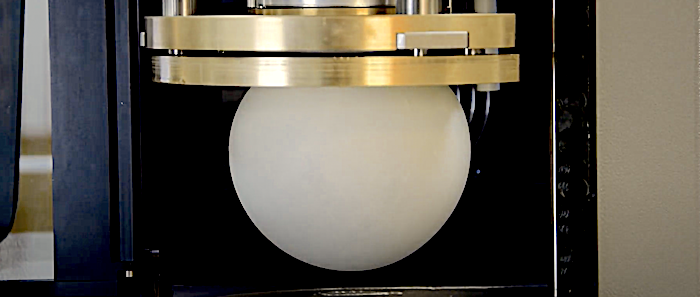
The alveograph is a pretty unique tool. It blows a piece of dough into a balloon, and then records its properties before it bursts and deflates. This helps assess the baking performance of flour in the production of bread, noodles, and tortillas, among other things.
Bakers use this data to gain understanding of fluctuations in dough rheological changes by assessing:
- Tenacity
- Elasticity
- Baking strength
- Resistance of dough to deformation
- Extensibility
The alveograph helps millers and bakers to:
- Classify wheats or flours according to baking strength
- Optimize flour blends and streams
- Detect proteolytic activity in wheat
- Evaluate the conformity of incoming flour
- Adjusting mixing, water absorption, proofing conditions for given doughs (time, relative humidity, temperature)
- Assess the need for dough conditioners (redox agents, emulsifiers, enzymes for strengthening or weakening of dough)
How does it work?
The test is done with the following steps:
- Prepare 250 g of flour and a sodium chloride solution (2.5% weight/volume). On the constant hydration method, the volume of water required to hydrate the flour to a predetermined value is adjusted according to the moisture content of the sample. An adapted hydration protocol (based on actual four water absorption capacity) is available.
- Mix and knead in a chamber for about 8 minutes to form a dough of proper rheology and consistency.
- Extrude the dough. This step aligns the gluten network and is very important to create repeatable and reproducible bubbles.
- Divide the extruded dough into five equal parts. Then, they are sheeted with a roll to obtain a fixed thickness (12 mm), followed by dough resting.
- Cut the dough sheets into discs using a die, and proof in an isothermal (temperature-controlled) box.
- Automatically inflate the dough disc by injecting air at constant pressure and flow rate until the resulting bubble bursts. Record the pressure inside the bubble and time it takes for the bubble to burst.
- Perform the test on the 5 individual patties, and average the pressure/time parameters.

